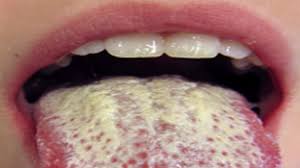CANDIDIASIS

What is candidiasis?
Candidiasis is yeast infection that can affect cutaneous tissues (cutaneous candidiasis) or mucosal surfaces. Superficial infections in healthy individuals affect the back of the throat, oral cavity and genitalia. Candida yeast likes to grow in warm, moist, dark environments. They can commonly occur in body folds (axillae, groin, intergluteal space), genitals (vulva/vagina, penis), lips and oral cavity. Candida lesions are red, tender, itchy and have “satellite” lesions. Satellite lesions are small, red lesions on the borders of the rash. If located in the oral cavity it can form a white film with satellite lesions on the hard palate. In vaginal yeast infections cottage cheese like discharge may be produced.
How is candidiasis diagnosed?
Candida can be diagnosed by scrapping a sample from the skin, applying a special stain, and viewing it under a microscope. Microscopy shows the characteristic forms of Candida called pseudohyphae and yeast. A culture can also be done for diagnosis.
Who is at risk for candidiasis?
In healthy individuals, those who have body parts exposed to moist, warm environments are at risk for cutaneous candidiasis. Examples include athletes with warm, moist gear and babies wearing diapers. Those taking antibiotics are at risk for genital candidiasis because antibiotics alter the normal bacterial environment in the genitals causing yeast to overpopulate. Lastly, immunocompromised individuals and at a high risk of candidiasis and tend to have more severe and disseminated infections (affecting internal organs) that are difficult to treat.
How is candidiasis treated?
Cutaneous candidiasis may be treated with oral antifungal agents such as fluconazole, itraconazole or ketoconazole. Topical antifungals can be used for symptom relief and for infections susceptible to topical therapies.
References:
Wolff K, Johnson, RA. Fitzpatrick’s Color Atlas and Synopsis of Clinical Dermatology. Sixth Edition. 2009.


